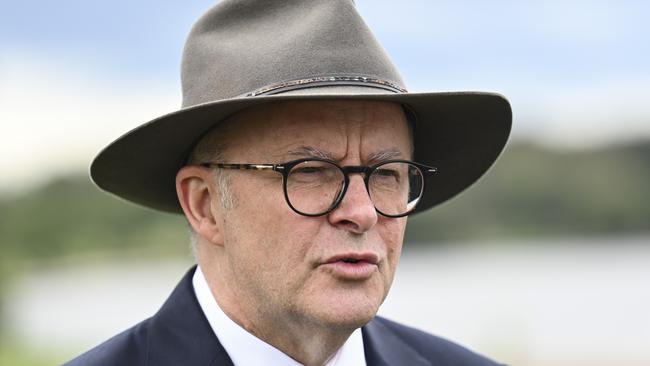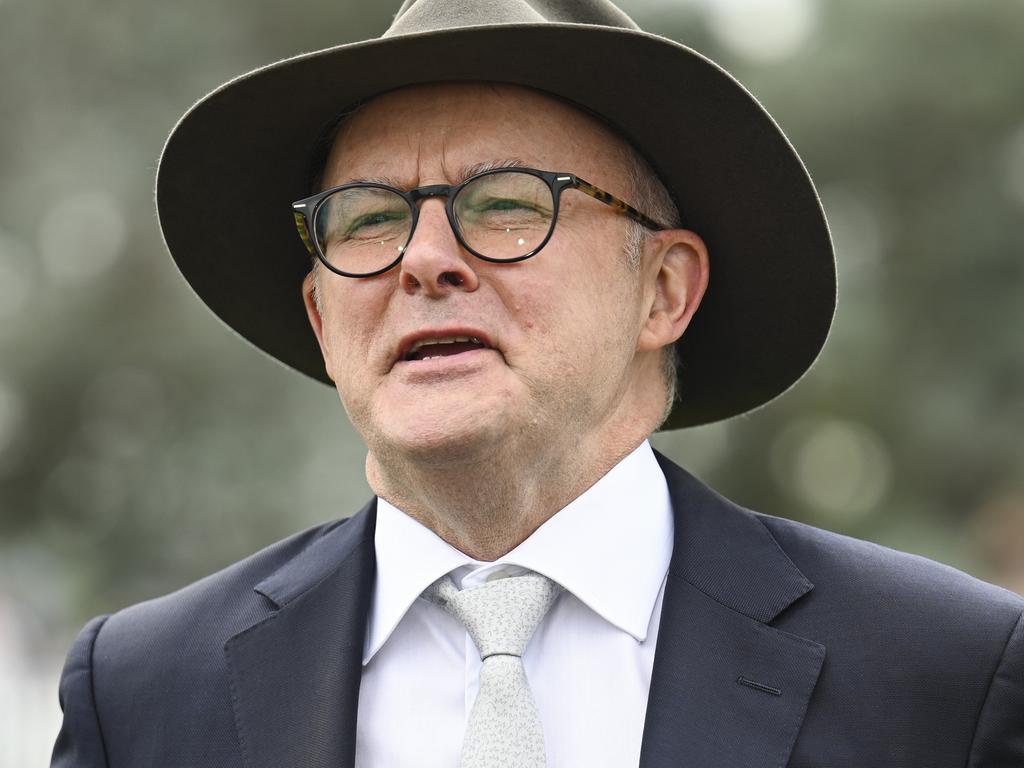Bracket-creep tax trap looming for Middle Aussies
More than a million workers Anthony Albanese says will be better off under his stage three tax rewrite will be worse off over the next decade.

More than a million workers Anthony Albanese says will be better off under his stage three tax rewrite will be worse off over the next decade, prompting accusations the Labor government is more focused on its immediate political position than long-term reform that will benefit Middle Australia.
The Weekend Australian’s analysis of the government’s package shows a total of 3.3 million Australians are likely to pay higher income taxes over the next 10 years, building on the 2.1 million who will receive a smaller tax cut in the first year of the package compared with the one legislated by Scott Morrison in 2019.
Assuming wages rise 3 per cent a year, workers currently earning $120,000 will begin paying more tax each year by 2031-32 while those earning $130,000 will be worse off by the end of the decade.
Workers currently earning $140,000 would be taxed at a higher rate by 2026-27, two years after the package is operational.
The government has said the 11.5 million workers earning about $146,486 or less will be better off under its plan, but this is only for the first year. Over a decade, a worker earning $130,000 will pay nearly $3500 more tax under the government’s plan compared with the original stage three package, while a worker on $140,000 will pay $12,723 more tax. Both scenarios assume the worker is not promoted to a higher-paying job or receive a pay rise above inflation. Bracket creep is a key reason the government will gain $28bn in revenue over a decade on its stage three rewrite.
EQ Economics managing director Warren Hogan said Labor’s overhaul of stage three was aimed at “short-term economic and political objectives”. “It has completely come at the expense of the long-term wellbeing of everyone and of the concept of economic reform,” Mr Hogan said. “Bracket creep is a silent tax increase. The biggest disappointment about this package is keeping the 37 per cent tax bracket.”
Under the initial stage three proposal, which Mr Albanese vowed at the 2022 election to retain, workers earning between $45,001 and $200,000 would be taxed at a top marginal rate of 30 per cent. Under Labor’s plan, earnings between $18,200 and $45,000 are taxed at 16 per cent while the rate jumps to 30 per cent for each dollar earnt to $135,000. Earnings between $135,000 and $190,000 are taxed at 37 per cent, before the top marginal rate of 45 per cent kicks in.
A spokesman for Jim Chalmers – who on Friday would not rule out revisiting Bill Shorten-era clampdowns on negative gearing and franking-credit tax concessions – said people focusing on bracket creep were “really clutching at straws”.
“They’re looking for excuses to oppose bigger tax cuts for more people, and they’re doing that for political reasons, not economic reasons,” the spokesman said.

“Treasury’s advice is our plan is better at dealing with bracket creep and that’s part of the reason why we’re doing it. Our plan provides better protection against bracket creep over the decade, including for the average taxpayer and those on low and middle incomes. By 2034–35, someone earning an average income will pay $21,635 less tax than they would without these tax cuts.”
Mr Albanese is staring down a looming battle in the Senate to legislate his proposed changes to stage three, after Greens leader Adam Bandt vowed to fight the overhaul amid concern it does not do enough for low- and middle-income earners. Mr Bandt said on Friday voters should be “entitled to expect more from Labor than just being slightly less crap than Scott Morrison”.
The government may be forced to negotiate with the Greens if the Coalition decides to block the amendments, and will need support from two other crossbenchers to get its policy through the upper house.
Peter Dutton would not confirm whether the opposition would support the changes, but Liberal frontbencher Jonathon Duniam said it was his understanding the party would back the original tax cuts unchanged.
Under Labor’s changes, a worker on $120,000 would receive a tax cut of $804 in 2024-25, but over the course of the 10 years to 2034-35, that worker’s tax saving would be only $2657, equivalent to 66c a day, under the effects of bracket creep. Should the worker on $120,000 receive a promotion in five years, boosting their income by $17,000, they would pay $7844 more tax under Labor over the period to 2034-35.
Mr Albanese said the revamped policy was a “calibrated, sensible package” that was responding to the cost-of-living pressures faced by low- and middle-income earners. The Prime Minister quoted interventionist economist John Maynard Keynes in defending his broken promise on the basis of changed economic circumstances.

“John Maynard Keynes, who was a pretty handy economist, had some good quotes about what happens when facts change,” the Prime Minister said in Canberra.
“He said, ‘I changed my mind. What do you do?’
“I’m being upfront about the fact that we have changed our position, because the economic circumstances have changed. And when economic circumstances change, you change your economic policy.”
Independent economist Saul Eslake said he was not surprised that another 1.2 million taxpayers would be worse off over the next decade under Labor’ s plan, calling bracket creep “an enduring problem” that governments had little appetitive to tackle.
Mr Eslake said Labor’s claim 11.5 million workers would be better off under its plan was technically correct despite the fact they might be worse off in six years. “I think the reason Labor is saying that (workers are better off) in the short term is that it’s true, in the period between now and the election which is the period they are focused on,” Mr Eslake said.
Mr Eslake backed the changes as “defensible” given they delivered cost-of-living relief without materially adding to inflation.
Grattan Institute economic policy director Brendan Coates said Labor’s stage three tax policy was marginally more inflationary than the Coalition’s package, predicting it would delay the first rate cut by the Reserve Bank by a month or two.







To join the conversation, please log in. Don't have an account? Register
Join the conversation, you are commenting as Logout